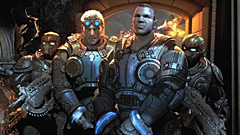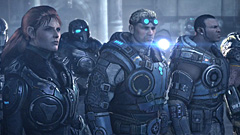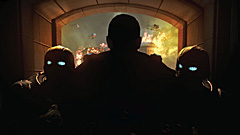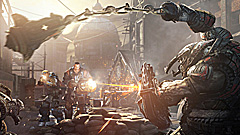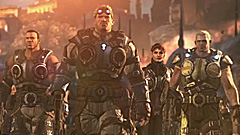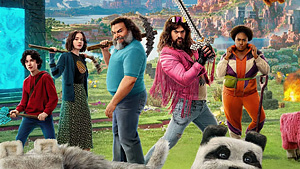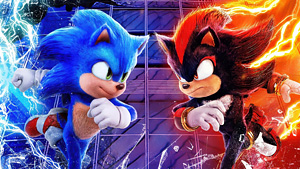March 27, 2013 by Paul Curtin

But with the stellar Gears of War 3 having been released less than a year ago and key members of the development team dropping out towards the end of its production, is Judgment a glorious prequel or just a glorified expansion pack disguised as an excuse to have one last exclusive by Microsoft before the release of the next Xbox?

Judgment takes place during the immediate aftermath of Emergence Day, 14 years before the events of the first game, following the initial shock of the Locust invasion. With Marcus and Dom not around yet to form Delta squad, familiar faces Damon Baird and August Cole (who now look noticeably younger) form the original Kilo squad, along with new characters Garron Paduk and Sofia Hendrik.
Taking the lead, Lt. Baird and the rest of Kilo are put on trial by fire, and the majority of the game’s story is revealed through a series of testimonies from the characters as they try to prove that what they did was justified. Unfortunately, while starting the story from the end is intriguing, the same cannot be said about the characters, and the story never really pays off with a lack of epic moments and big boss battles.
Dialog and voice acting between characters are weak, and Delta’s fourth Beatle, Baird, just isn’t interesting enough in the story to care much about. People Can Fly (Bulletstorm) has even managed to make the more youthful Cole Train boring, who remains far calmer and quieter through the entire prequel’s campaign than in previous installments.

Mediocre characters and voice acting aside, it’s mainly the way in which the story is told to try and incorporate the new features that hurt Judgment as much as the new features help it. The biggest new addition is in the form of giant glowing COG logos that can be found at the start of every mission. Selecting these logos allows players to “declassify” missions right before they start and throw a slight monkey wrench into the mix.
The declassification system is an interesting concept that succeeds in letting players experience more challenging gameplay scenarios, such as having to use specific guns, less ammo, face different enemies, or even take on environmental hazards with no health regeneration. However, having a constant star rating scale while you’re playing and stat screens at the end of each mission make the entire campaign feel less like a story and more like a series of extra challenge missions. The new challenges can be fun, but ultimately they hurt the immersion and flow of the game that previous titles in the series have done so well.
Level design is also on a much smaller scale than previous Gears and feels more like the original in a bad way with less open areas and only one weak boss fight at the end. Design Director, Cliff Bleszinksi (who has since left Epic Games), had originally described Judgment as an exciting way for them to get back to the basics, a time of the Locust being scary. But after four new titles over the course of only seven years, like gamers with fatigue, the characters themselves don’t seem fazed at all by enemies, even when they’re supposed to be encountering a new type of monster for the first time.

The campaign’s other big feature is the Smart Spawn System (or S3). The new S3 system makes each encounter a little more unique by switching up the locations and types of enemies after each death or replay. The system helps introduce new challenges by changing up the gameplay so that you might not know what to expect each time you play, but it doesn’t do enough to where you’ll be having a vastly different experience that will make you want to replay levels over and over again to see how the game might throw a different wave of Locust at you than the last.
A slightly different control scheme has also been added that does away with forcing players to use the D-Pad to manually switch between each weapon. Players can now only switch between two weapons by using Y. In doing so, the new system also eliminates the ability to carry two primary weapons at once. Instead, you’ll have to choose between a Gnasher, Sawed-Off, Hammerburst, and the iconic Lancer — or kill somebody else and pick up their gun if you want to carry two. Like the weapon slots, grenades have also been removed from the D-Pad with players now having the ability to heave grenades at any time by hitting the right bumper.
These little tweaks are sure to upset a lot of hardcore players and make for a ton of angry forum posts. Sometimes the changes feel for the better, sometimes for the worse; it really depends on your own playstyle and preference. Personally, I didn’t mind the change in the controls as much as not being able to start with both a Hammerburst and Gnasher.

The modified controls work even better in the new competitive multiplayer modes online where gameplay has changed the most with a pace that’s faster than ever. Sadly, down-but-not-out and executions have been removed along with the original elimination-style modes, which have been replaced with a generic Team Deathmatch that involves five players on two teams simply racing to score 25 kills first.
Judgment also introduces some new concepts to the Gears multiplayer experience in the form of a Free For All mode and a completely new mode called OverRun that plays a lot like Beast and Horde Modes (both of which have also been removed) with a class-based system. The four COG and four Locust classes work nicely and give players an even better reason to work together if they want to win the attack-and-defend battles. Oddly, OverRun is now the only competitive mode that pits Locust and COG soldiers against each other.
Players in modes such as Team Deathmatch can now only be told apart by a greater emphasis on whether their armor is red or blue. While Red vs. Blue might be a more generic concept, People Can Fly has done a great job making the colors pop so that players can still be able to easily tell friend from foe. And while there’s no longer Locust character selection options, there are tons more unique character skin options for COG members.

The only drawback is that many of the character and weapon skins are an excuse to generate more microtransactions as they’re only unlockable by purchasing through Xbox Live. To somewhat counter this, Prize Boxes have also been added as a neat new feature that can be unlocked after earning points and completing achievements in singleplayer and multiplayer. Prizes in said boxes randomly reward players with awesome skins for their guns and characters, such as a glowing skeleton, zombie, mummy, bacon (yes, there’s even a skin that makes your character’s skin turn into bacon) and other comical and bad-ass looks.
But multiplayer is no joke when compared to previous installments. Maps are now far more vertical, and while still not on the level of its competition, the ability to jump down multiple levels instantly on many areas of maps is a welcome change. It’s great finally being able to stalk and drop in on your enemies unlike previous maps where you were confined to two or three paths and couldn’t scale two-foot-tall barriers that Epic didn’t want you jumping over. However, there are only 8 new maps in total (4 of which are only for OverRun), so the map selection can get stale pretty quickly.
Another strange choice is the addition of the extra tacked-on Aftermath campaign after you complete Judgment’s primary campaign. Aftermath plays as if it were DLC taken straight out of Gears of War 3 (it probably was) and feels out of place due to its very short length. It successfully ties Judgment together with the events of Gears of War 3 and is actually more enjoyable than all of Judgment due to its Gears 3-style of storytelling without any challenges. If anything, it makes you want to go back and play Gears 3 instead of Judgment.
The Verdict
As a fan of everything so far from the Gears of War series, it’s clear that Judgment is by far the weakest of the four titles. The latest prequel feels like the original, but not in a good way. Throughout the entire campaign, you’ll get the sense of a lower budget with a less experienced team behind the project, which is understandable since like Kilo squad, most of the game was developed by the B-team studio, People Can Fly, instead of Epic.
It’s also worth noting that Epic Games’ design director Cliff Bleszinksi and director of production Rod Fergusson, along with People Can Fly co-founder Adrian Chmielarz, all resigned before production on the game had been completed. It’s hard to say how much of an impact the three leaving had on the final product, and it most likely wasn’t much due to how late into production the game already was, but it’s a sign that even the main people behind the series seem to have Gears fatigue and weren’t even willing to stick it out to be a part of the game’s launch.
Still, aside from some minor lag and texture pop-in issues, Judgment looks and plays just as smoothly as any of the previous Gears. Its weak story and lack of classic multiplayer modes and features are a disappointment overall for anybody expecting truly great things like the previous three games. However, even with its smaller scale that feels more like a glorified expansion pack than a true stand-alone sequel, Judgment is still fun to play, especially for fans of the series who are dying for anything new from the franchise. Gears of War: Judgment gets 3.5 out of 5 stars (Very Good).
The Pros
- New changes help keep the series from feeling completely stale
- Solid multiplayer experience with vertical maps and tons of new unlockable goodies
- New challenges offer a different way to play the campaign
- Graphics look just as good as ever
The Cons
- Doesn’t feel anywhere near as epic as the last three games
- None of the characters stand out in the weak story
- New challenge format takes away from the rich storytelling
- Multiplayer is missing the classic modes and features that put Gears on the map



